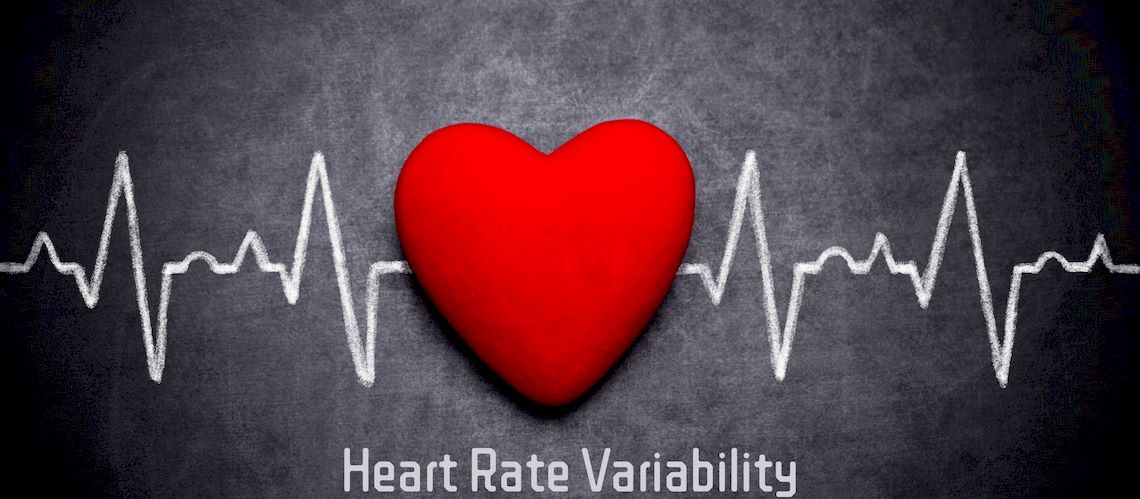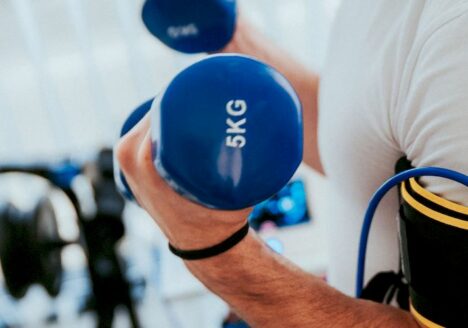Heart Rate Variability (HRV) has emerged as a crucial biomarker for understanding various aspects of health, particularly in emotional regulation, stress management, and overall well-being. In the Self Matrix framework, which emphasizes the integration of body, mind, and spirit for holistic health, HRV provides a key insight into how well an individual is managing physiological stressors and maintaining balance. HRV measures the variation in time intervals between consecutive heartbeats, reflecting the dynamic interplay between the sympathetic and parasympathetic branches of the autonomic nervous system (ANS). A high HRV is generally indicative of better health outcomes, including emotional regulation, physical vitality, and stress resilience, while low HRV is linked to stress, anxiety, and other health issues (Mather & Thayer, 2018; Conder & Conder, 2014).
Definition
HRV refers to the variation in time intervals between consecutive heartbeats, governed by the ANS. The ANS consists of the sympathetic nervous system, responsible for the ‘fight or flight’ response, and the parasympathetic nervous system, which supports ‘rest and digest’ activities. A healthy balance between these two systems, often reflected in higher HRV, is essential for maintaining emotional and physical well-being. A higher HRV indicates a stronger ability to manage stress and adapt to changing environments, while a lower HRV suggests impaired regulation and a predisposition to stress-related disorders (Mather & Thayer, 2018; Conder & Conder, 2014).
History and Origins
Although HRV has gained significant attention in modern health sciences, its roots can be traced back to early studies of the autonomic nervous system. Initially studied in the context of cardiovascular health, HRV’s role has expanded to encompass emotional and psychological well-being, particularly through the lens of the Neurovisceral Integration Model. The Neurovisceral Integration Model suggests that HRV reflects the brain’s capacity to regulate autonomic functions, particularly through prefrontal cortex activity. A well-regulated HRV shows efficient emotional regulation and stress management capacities (Thayer & Lane, 2000). This model posits that HRV is an index of how effectively the brain’s emotional regulation networks function, particularly those involving the medial prefrontal cortex (Mather & Thayer, 2018). Over time, HRV has evolved as a reliable marker for stress resilience and emotional balance, making it a valuable tool in holistic health approaches.
Principles and Concepts
Central to HRV’s utility in the Self Matrix framework is its reflection of the body-mind connection. The Neurovisceral Integration Model highlights how HRV represents the functional efficiency of the brain’s emotional regulation systems. Individuals with higher HRV tend to show greater emotional resilience and improved stress management capabilities. For example, HRV biofeedback, a method of training individuals to control their physiological responses through breathing techniques, has been shown to improve mental health outcomes, including reductions in anxiety and depression (Prinsloo et al., 2013; Dormal et al., 2021). By consciously influencing their HRV, individuals can activate their parasympathetic nervous system, promoting relaxation and emotional stability (Prinsloo et al., 2013).
Benefits
The benefits of maintaining a high HRV are vast and deeply interconnected with emotional, physical, and cognitive health. High HRV is associated with better emotional regulation, allowing individuals to manage stress and negative emotions more effectively (Mather & Thayer, 2018). Studies consistently show that HRV biofeedback can reduce anxiety and depression by improving emotional regulation. Prinsloo et al. (2013) demonstrated that even brief HRV biofeedback sessions can significantly enhance relaxation and reduce anxiety levels. Furthermore, HRV biofeedback has been demonstrated to improve mental health, helping individuals reduce anxiety and depression by enhancing their control over their physiological states (Park et al., 2020). Additionally, HRV’s role in emotional regulation contributes to a balanced integration of body, mind, and spirit, fostering overall well-being.
Beyond emotional health, HRV is linked to metabolic flexibility, which is particularly relevant for individuals engaged in physical activities and endurance sports. Research shows that athletes with higher HRV exhibit better metabolic control and recovery, essential for maintaining long-term health and performance (Monferrer-Marín et al., 2024; Stanley et al., 2013). HRV is also closely linked to metabolic flexibility, which determines how well the body shifts between energy sources (fat and carbohydrates) during physical activity. High HRV indicates better metabolic flexibility, enabling athletes to perform optimally and recover efficiently (Stanley et al., 2013).
Applications
HRV is widely used to monitor stress, emotional regulation, cognitive function, and physical health. In holistic wellness, HRV monitoring is widely used in practices such as mindfulness, meditation, and even fitness tracking to help individuals optimize emotional and physical well-being. By monitoring HRV in real time, practitioners can assess stress levels and modify their routines to support optimal health (Botek et al., 2013). In therapy, HRV biofeedback is employed to help individuals manage conditions such as anxiety, depression, and chronic stress. By training individuals to influence their HRV through controlled breathing techniques, HRV biofeedback allows for the activation of the parasympathetic nervous system, promoting relaxation and mental clarity (Prinsloo et al., 2013; Dormal et al., 2021). HRV also plays a significant role in athletic performance, where it serves as a tool for optimizing training and recovery (Manresa‐Rocamora et al., 2021). Higher HRV in athletes is linked to better cardiovascular fitness and faster recovery, which are essential for sustained performance and physical vitality (Tai et al., 2022).
Additionally, HRV has implications for cognitive functions. Studies have shown that higher HRV is linked to better executive functions, such as working memory and attention, which are critical for both academic and professional performance (Forte et al., 2019; Passi et al., 2022). Research has demonstrated that higher HRV is associated with better executive functioning, particularly in tasks involving working memory and attention. Forte et al. (2019) showed that individuals with higher HRV exhibited superior cognitive performance under stress. In particular, HRV during sleep has been associated with improved memory consolidation and cognitive performance (Whitehurst et al., 2016), demonstrating its broad utility beyond emotional and physical health.
Scientific Evidence
A growing body of research supports HRV’s role in improving emotional regulation, physical performance, and mental health. Studies have shown that HRV biofeedback can enhance emotional regulation by helping individuals control their physiological responses to stress (Prinsloo et al., 2013). A meta-analysis by Lehrer et al. (2020) demonstrated that HRV biofeedback resulted in a significant reduction in anxiety symptoms (effect size of 0.67), further solidifying its role in emotional regulation and overall health. Additionally, HRV is linked to cognitive resilience, with higher HRV associated with better executive functions, such as working memory and attention, critical for cognitive performance (Forte et al., 2019). In the athletic domain, research indicates that HRV can predict an athlete’s readiness to train, with lower HRV signaling a need for recovery (Botek et al., 2013). Similarly, HRV has been shown to play a role in post-stress recovery, as individuals with low vagal tone exhibit impaired cardiovascular and immune recovery following stress, making HRV a key indicator of long-term health resilience (Weber et al., 2010). These findings highlight HRV’s role in promoting balance and resilience across multiple aspects of health.
How to Get Started
Integrating HRV monitoring and biofeedback into a holistic health routine is a practical way to enhance emotional regulation and stress management. Individuals can begin by using wearable devices to monitor their HRV and practicing controlled breathing exercises to influence their HRV. Simple techniques, such as slow diaphragmatic breathing, can activate the parasympathetic nervous system and increase HRV, promoting relaxation and emotional balance (Prinsloo et al., 2013). Additionally, engaging in regular physical activity, mindfulness, and meditation can help improve HRV, supporting both physical vitality and mental clarity. Given HRV’s links to metabolic flexibility and cognitive function, incorporating biofeedback into daily routines offers benefits across body, mind, and spirit (Monferrer-Marín et al., 2024; Stanley et al., 2013; Passi et al., 2022).
Case Studies and Testimonials
Numerous case studies and clinical trials have demonstrated the efficacy of HRV biofeedback in improving emotional and physical health. For instance, Prinsloo et al. (2013) found a 20% improvement in HRV after six HRV biofeedback sessions, which led to better emotional regulation and reduced anxiety in participants. In one study, HRV biofeedback was shown to reduce anxiety and improve relaxation states in athletes, enhancing their emotional regulation and performance under stress (Prinsloo et al., 2013). Similarly, studies in clinical populations have demonstrated that HRV biofeedback can significantly reduce symptoms of anxiety and depression, supporting its role as a therapeutic tool (Dormal et al., 2021). Additionally, improved HRV during sleep has been associated with better memory consolidation, further underscoring its wide-ranging benefits for cognitive and emotional health (Whitehurst et al., 2016). These findings reinforce the value of HRV biofeedback in promoting holistic health within the Self Matrix framework.
Conclusion
HRV is a powerful biomarker that reflects the body-mind connection, making it a valuable tool within the Self Matrix framework for promoting holistic health. Its role in emotional regulation, stress management, metabolic flexibility, cognitive function, and physical performance underscores its importance in maintaining balance and resilience. By integrating HRV monitoring and biofeedback into daily routines, individuals can enhance their emotional stability, improve mental clarity, and achieve better overall well-being. As research continues to explore the intricacies of HRV, its application in health practices promises to deepen our understanding of the interconnectedness of body, mind, and spirit.
References:
Botek, M., McKune, A., Krejčí, J., Stejskal, P., & Gába, A. (2013). Change in performance in response to training load adjustment based on autonomic activity. International Journal of Sports Medicine, 35(06), 482-488. https://doi.org
Conder, R. and Conder, A. (2014). Heart rate variability interventions for concussion and rehabilitation. Frontiers in Psychology, 5. https://doi.org
Dormal, V., Vermeulen, N., & Mejias, S. (2021). Is heart rate variability biofeedback useful in children and adolescents? a systematic review. Journal of Child Psychology and Psychiatry, 62(12), 1379-1390. https://doi.org
Forte, G., Favieri, F., & Casagrande, M. (2019). Heart rate variability and cognitive function: a systematic review. Frontiers in Neuroscience, 13. https://doi.org
Lehrer, P., Eddie, D., & Jonson, B. (2020). A meta-analysis of heart rate variability biofeedback: Effects on anxiety and depression. International Journal of Environmental Research and Public Health, 17(21), pp.8013. https://doi.org/
Manresa‐Rocamora, A., Sarabia, J., Javaloyes, A., Flatt, A., & Moya‐Ramón, M. (2021). Heart rate variability-guided training for enhancing cardiac-vagal modulation, aerobic fitness, and endurance performance: a methodological systematic review with meta-analysis. International Journal of Environmental Research and Public Health, 18(19), 10299. https://doi.org
Mather, M. and Thayer, J. (2018). How heart rate variability affects emotion regulation brain networks. Current Opinion in Behavioral Sciences, 19, 98-104. https://doi.org
Monferrer-Marín, J. et al. (2024) Metabolic flexibility and resting autonomic function in active menopausal women. European Journal of Applied Physiology. [Online] [online]. Available from: https://doi.org/
Park, S., Hwang, S., & Lee, S. (2020). Pilot application of biofeedback training program for racket sports players. Annals of Applied Sport Science, 8(4), 0-0. https://doi.org
Passi, T., Lukander, K., Laarni, J., Närväinen, J., Rissanen, J., Vaara, J., … & Pakarinen, S. (2022). Effects of overnight military training and acute battle stress on the cognitive performance of soldiers in simulated urban combat. Frontiers in Psychology, 13. https://doi.org
Prinsloo, G., Derman, W., Lambert, M., & Rauch, H. (2013). The effect of a single episode of short duration heart rate variability biofeedback on measures of anxiety and relaxation states.. International Journal of Stress Management, 20(4), 391-411. https://doi.org
Stanley, J. et al. (2013) Cardiac parasympathetic reactivation following exercise: implications for training prescription. Sports Medicine (Auckland, N.Z.). [Online] 43 (12), 1259–1277.
Tai, C., Chen, Y., Kalfiřt, L., Masodsai, K., Su, C., & Yang, A. (2022). Differences between elite male and female badminton athletes regarding heart rate variability, arterial stiffness, and aerobic capacity. International Journal of Environmental Research and Public Health, 19(6), 3206. https://doi.org
Thayer, J.F., & Lane, R.D. (2000). A model of neurovisceral integration in emotion regulation and dysregulation. Journal of Affective Disorders, 61(3), pp.201-216. https://doi.org/
Weber, C., Thayer, J., Rudat, M., Wirtz, P., Zimmermann-Viehoff, F., Thomas, A., … & Deter, H. (2010). Low vagal tone is associated with impaired post stress recovery of cardiovascular, endocrine, and immune markers. European Journal of Applied Physiology, 109(2), 201-211. https://doi.org
Whitehurst, L., Cellini, N., McDevitt, E., Duggan, K., & Mednick, S. (2016). Autonomic activity during sleep predicts memory consolidation in humans. Proceedings of the National Academy of Sciences, 113(26), 7272-7277. https://doi.org




